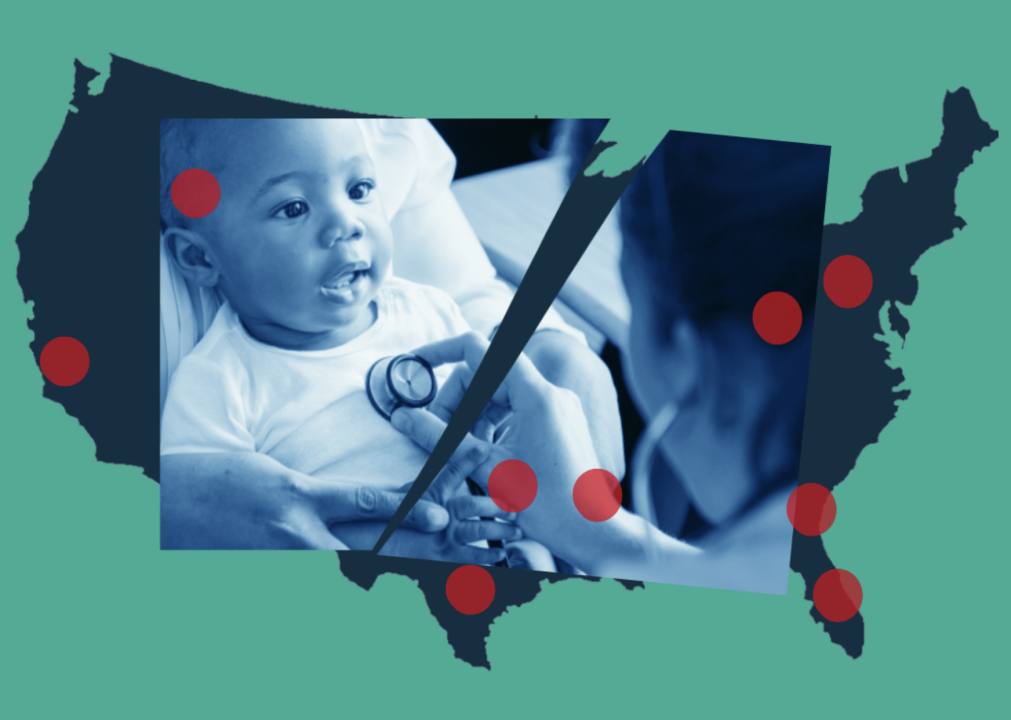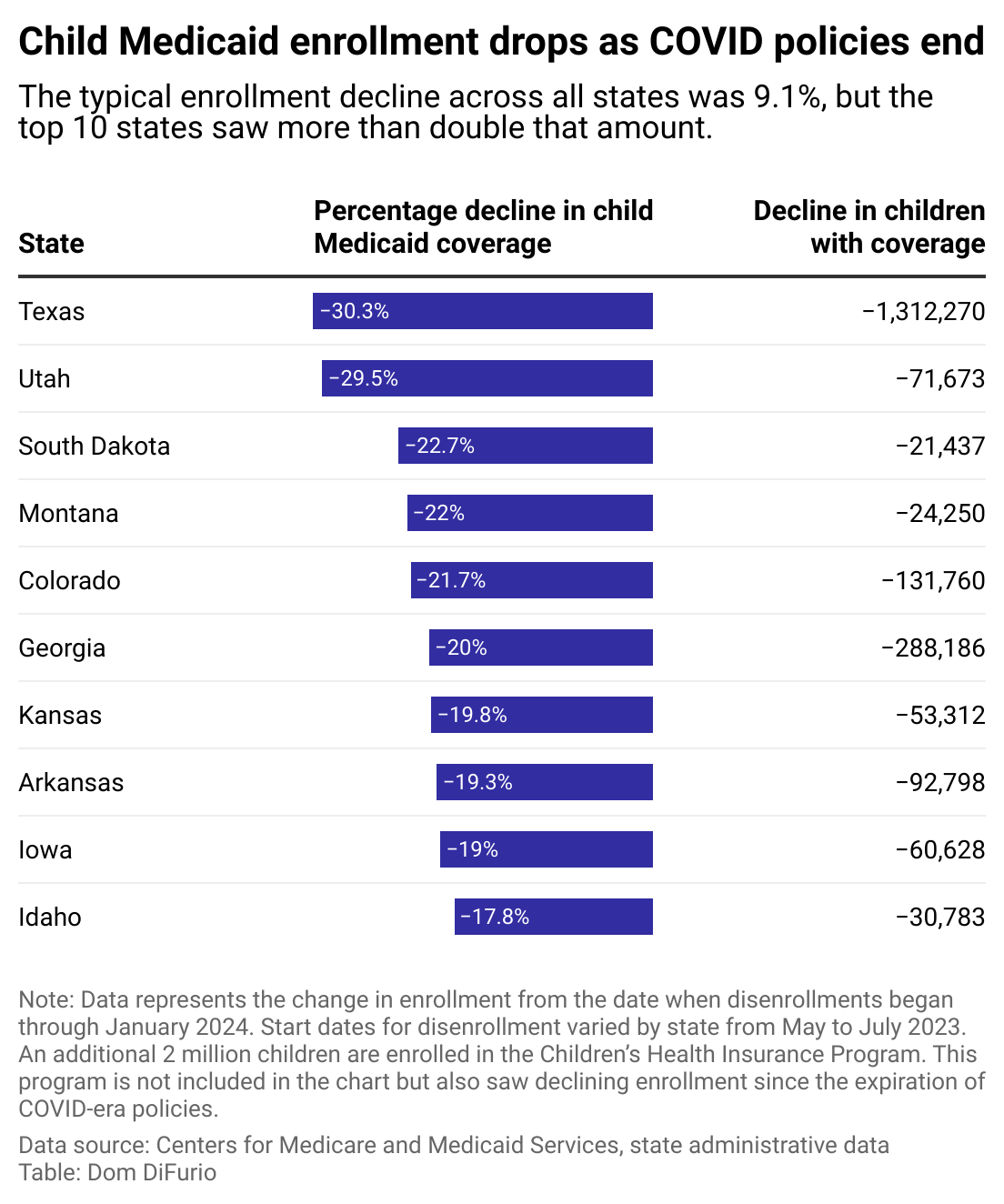
Half of U.S. children depend on government programs for health care, and in some states, they're beginning to lose that coverage at rates that have concerned the federal government.
Foothold Technology analyzed data from the Centers for Medicare and Medicaid Services and state health departments collected by the Georgetown University Center for Children and Families to illustrate which states have allowed children to lose health care at an alarmingly fast pace.
Passed in March 2020, the Families First Coronavirus Response Act provided additional Medicaid funds for states in exchange for meeting a requirement to provide continuous coverage for all Medicaid and Children's Health Insurance Program, or CHIP, recipients throughout the public health emergency. The policy pushed the nation's uninsured rate to a historic low of 8%, according to the Department of Health and Human Services. During the same period, between 2020 and 2023, the number of children enrolled in Medicaid and CHIP grew by 32%.
As of May 1, 2024, the Georgetown University CCF estimates nearly 5 million children have lost health care. Its researchers have dubbed the lifting of COVID-19 pandemic-era policies "the unwinding."
American children impacted by that loss of coverage are more likely to be Black, Hispanic, and Native American, populations already historically underserved by a number of essential services like health care, banking, and food availability. Experts have already pointed out that some of the states where children are experiencing the most coverage losses, such as Montana and Idaho, have large Native American populations.
Data has also shown the unwinding of public health care coverage for children has been more dramatic in some states than others.
The 10 states that saw enrollment decline the most account for nearly half (46%) of all child disenrollments since the COVID-era Medicaid and CHIP policies ended in early 2023. When kids lose health care coverage, they can see worse outcomes for conditions like asthma, infections, and other illnesses that families are then forced to pay out of pocket for or forgo altogether.

Data on the change in children's Medicaid enrollment since states began terminating recipients from Medicaid rolls paints a fractured picture of states' approaches to public health care.
According to the authors of a May 2024 CCF report, the disparity in enrollment drops between states is partly attributed to how quickly they chose to implement the unwinding of pandemic policies. The CMS allowed states to take up to 12 months to carry out the process of eligibility assessment and benefits renewal, but some states chose to move more quickly.
Most children who lost coverage may very well still be eligible for continued benefits, but they were disenrolled from Medicaid due to procedural factors like deadlines and paperwork. The bottom line is many children who are among the nation's most vulnerable are not receiving the medical coverage they're entitled to.
According to the CCF, no state had finished its unwinding process yet as of May. The great unwinding of a historically strong period of public health care coverage for Americans has offered harsh lessons about the different pathways forward in the wake of a crisis. It has also highlighted where states are willing to provide a stronger safety net for vulnerable populations like children.

In December, HHS Secretary Xavier Becerra sent letters to the governors of the states seeing the most Americans dropped from Medicaid rolls. The letters encouraged them to make renewals easier for children and families, remove barriers like fees and premiums that make it difficult for families to enroll kids in CHIP, improve call center operations, and expand their Medicaid programs.
"We strongly urge all states to do their part to make sure eligible children keep the coverage they need to grow and thrive," CMS administrator Chiquita Brooks-LaSure said in a statement.
States that have expanded Medicaid eligibility saw fewer children drop from health care enrollment at the end of the federal continuous coverage period. Affordable Care Act Medicaid expansion broadened eligibility, including for more low-income households.
In nonparticipating states in the Medicaid expansion, including Texas and Georgia, organizations warn that the unwinding process is hitting families with incomes below the federal poverty threshold hardest.
American families who have received notice that their children may be losing coverage for any reason can apply for low-cost health insurance through the Health Insurance Marketplace. They can apply for coverage and ultimately enroll as early as 60 days before losing Medicaid or CHIP coverage, with new coverage beginning at the start of the month following enrollment.
Story editing by Alizah Salario. Copy editing by Paris Close.
This story originally appeared on Foothold Technology and was produced and distributed in partnership with Stacker Studio.